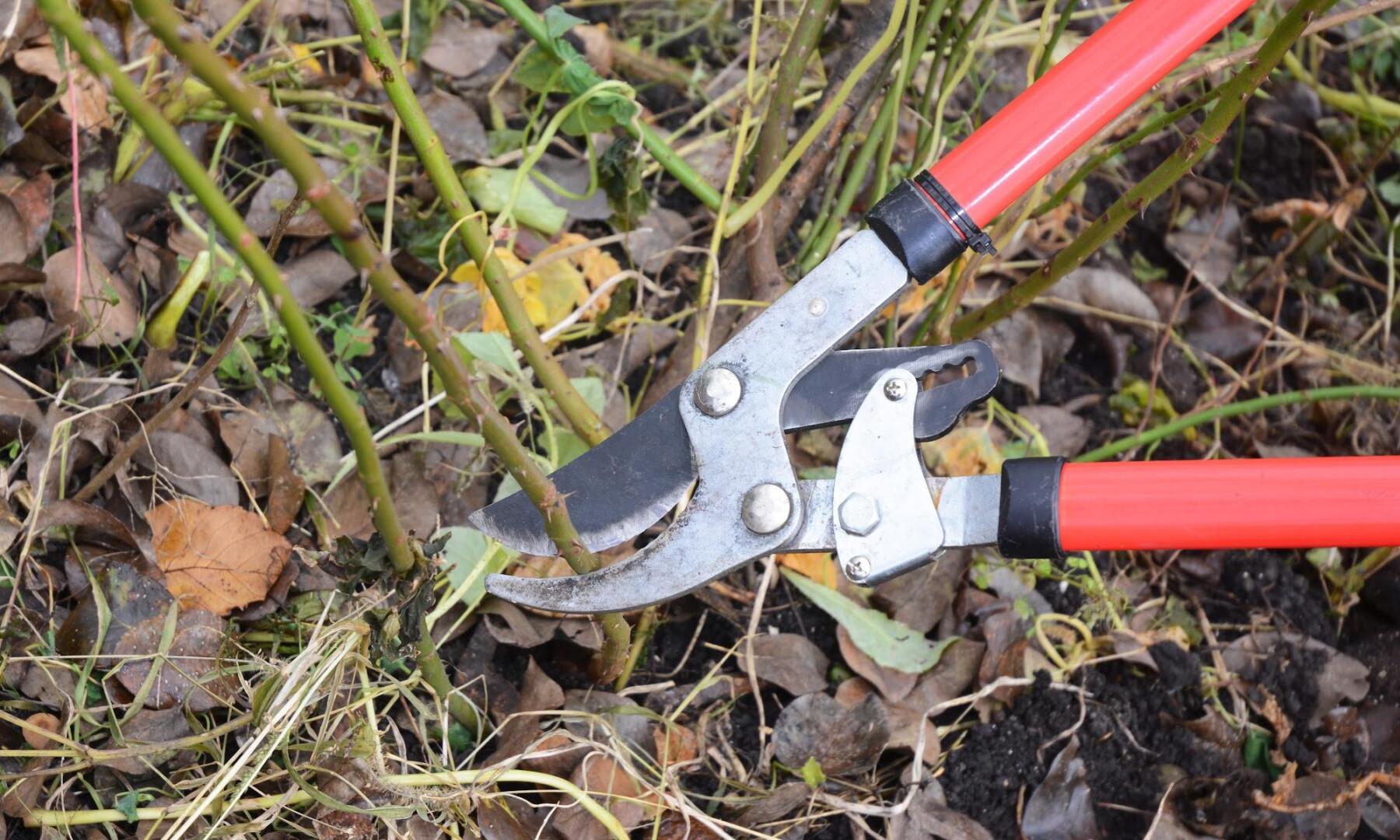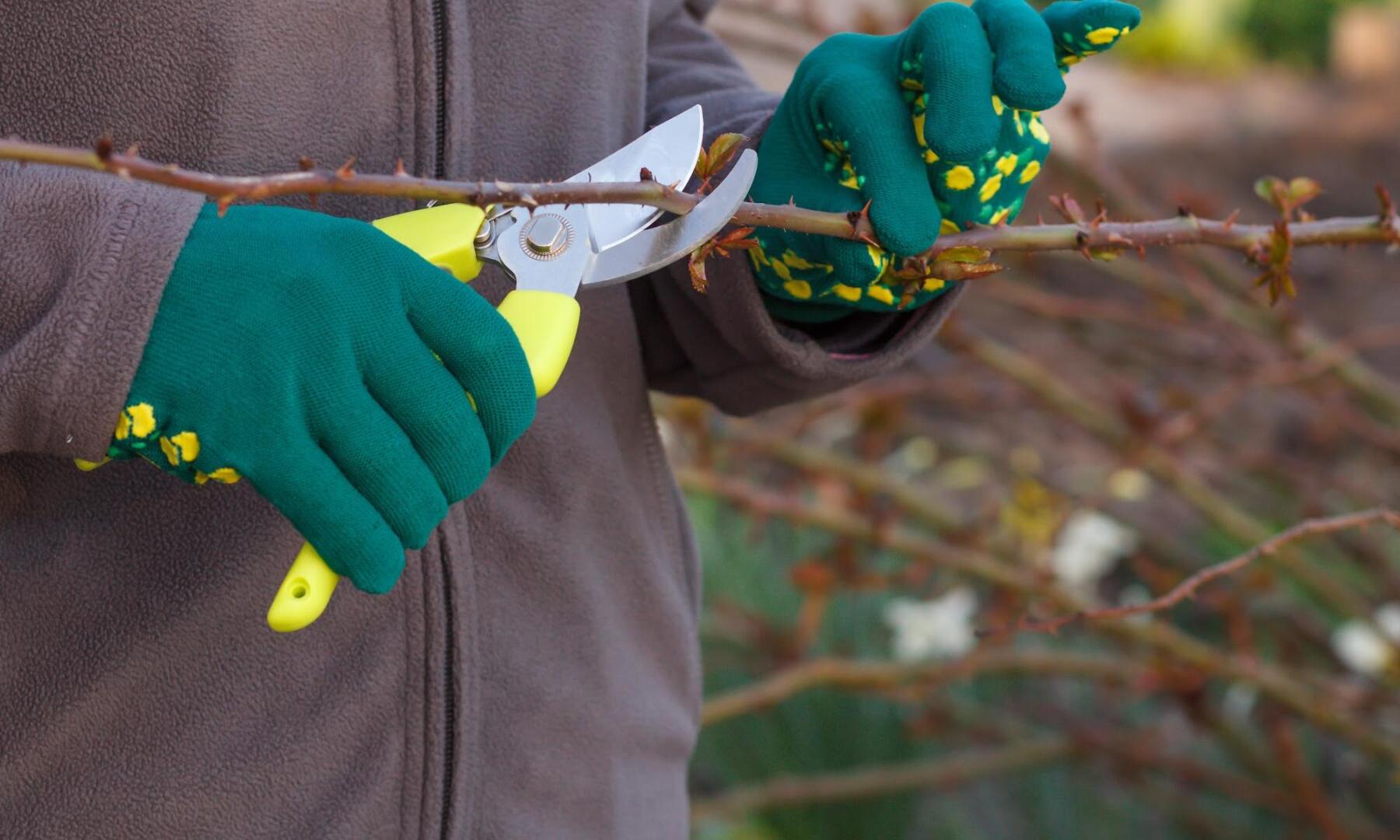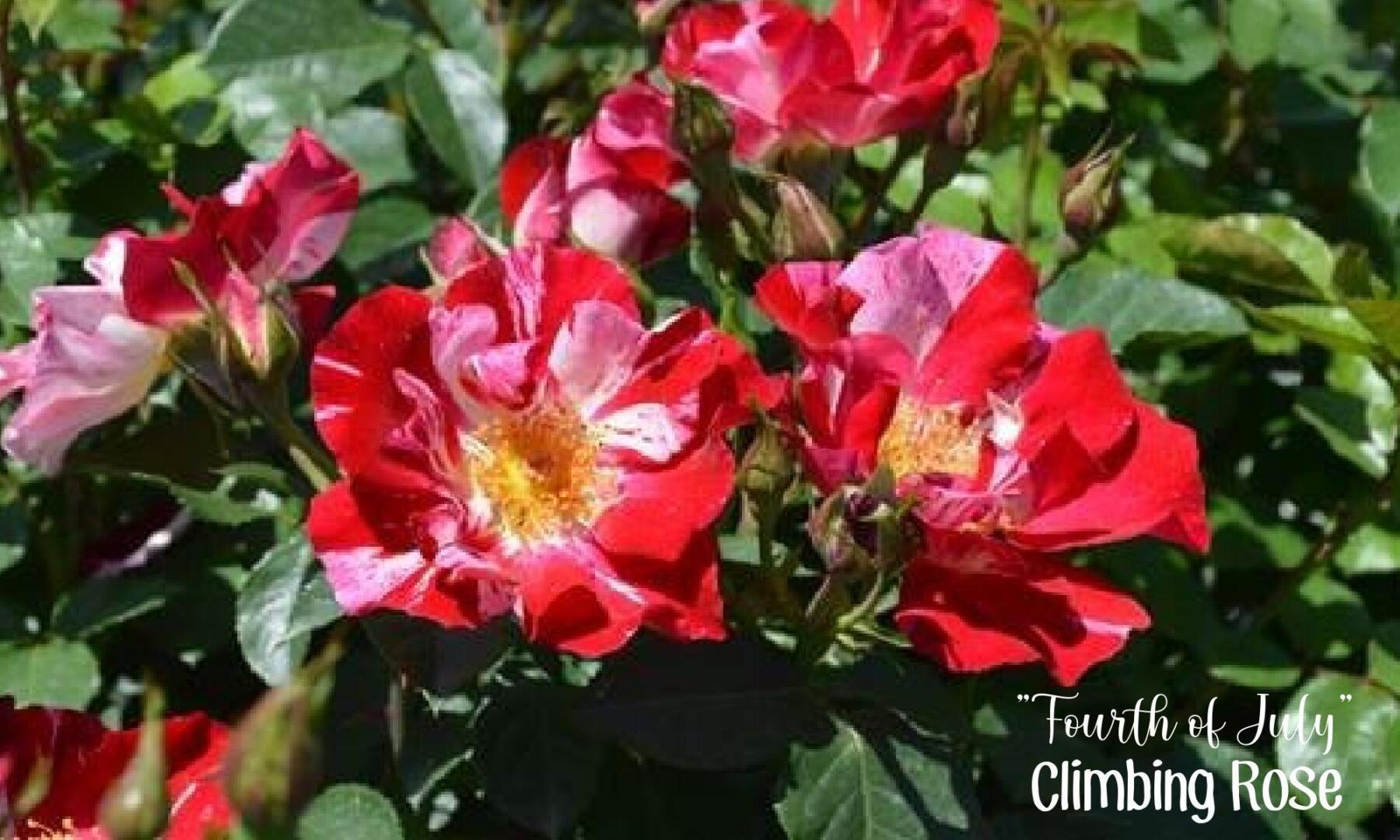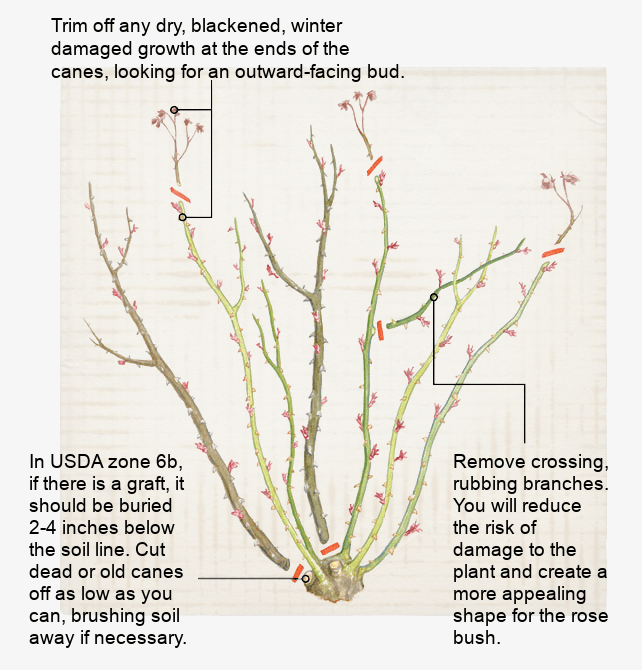PRUNING YOUR ROSES
Pruning roses can be intimidating to say the least, and cutting back a beautiful plant can downright make you sick to the stomach. But once you have the habit of pruning down, you will have a happy, healthy plant that will continue to thrive in your garden for a very long time. Pruning also helps to reduce the chance of diseases by opening the plant up to vital airflow.
When to Prune Roses
In the Lehigh Valley, zone 6b, roses should be pruned between late winter and early spring before blooms begin to show. Timing is very important. Keep an eye out for leaf growth and when the leaf buds begin to swell and take on a pink or reddish hue, you’ll know this is the time to start pruning. It’s best to prune before the buds break open and right after the end of any hard frosts.
What You’ll Need
Before you begin any trimming with your roses, be sure you’re well protected with thick garden gloves that cover your arms and clothing over your legs. Rose thorn pricks can cause a variety of bacterial and fungal infections, including sporotrichosis, commonly known as “rose-picker’s disease.” These infections could potentially be serious, so it’s important to wear proper protection.
- Long-sleeved garden gloves
- Bypass pruners
- Long-handled loppers
Before Getting Started
The proper pruning techniques vary depending on the type of rose you are tending to. Make sure you are aware of which variety of rose you have growing and it’s requirements before you prune.
Roses That Bloom Once on New Wood
Modern roses such as the hybrid tea, grandiflora, and floribundas bloom their best on the current season’s growth. With that in mind, they need pruned hard in spring (1/2 to 2/3 of the plant’s height) and have any old woody stems removed. Create an open “V” shape with the remaining canes (branches) by removing the center stems and any crossing branches. Leave three to five good healthy canes evenly spaced around the plant, in various lengths, to encourage continous blooming.
Roses That Bloom Once on Old Wood
Rambler roses must get pruned to remove winter and wind damage and shaped to maintain their size. They bloom only once and can be pruned right after flowering, all the way back to 2 or 3 inch canes if you choose. They grow quickly, so there’s no reason to be concerned over losing flowers for the next season.
Repeat Bloomers
Shrub Roses, like the Knock Out rose varieties and “The Fairy”, are repeat bloomers that flower on mature – but not old-woody branches. Leave them unpruned to increase growth in the first few years, and then remove 1/3 of the oldest canes as well as any dead, broken, or damaged branches.
Climbers, like “Joseph’s Coat and “Fourth of July,” may repeat bloom as well. Prune climbers early to remove winter damaged branches and dead wood. Prune again after flowering to keep the rose the desired shape and size. Remove any damaged, weak, or dead branches as necessary.
Pruning Instructions
Begin Pruning From the Ground Up
In late winter, check the overall health of your rose, including its shape. Start by pruning low, trimming off the dead canes at the base and opening up the center of the plant to allow light and air circulation.
Remove Broken, Dead, and Diseased Wood
Check the old wood down the cane to a spot that looks healthy and green. Cut it at a 45 degree angle, with a clean, sharp tool, careful to expose the white flesh inside. If the flesh is not white, cut lower until you find good, healthy flesh (inside of the branches).
Remove Twiggy Branches
Remove canes that are thinner than a pencil. These smaller canes will grow spindly and won’t produce many blossoms.
Remove Sucker Growth Below the Graft
A sucker is a new vertical growth that extends from one of the main canes. Suckers can also pop up from out of the ground, contain no flowers or very small flowers that draw essential nutritional sources from the plant that better parts of the plant need. Trim the suckers at the ground or below where the main branches fuse.
Prune New Growth
You’ll want to prune the new growth to create the desired size and shape you want. Make clean 45 degree angle cuts about 1/4″ above a bud that is facing towards the OUTSIDE of the plant.
Seal Cuts With White Glue
If cane borers are a problem, you can seal any major cuts with white glue.
Rose Pruning Tips
- Unless the species of your rose naturally produces red canes, dead branches can be spotted by their black or reddish-black appearance. Dead canes can also be splotchy or yellow, containing almost no green.
- If you don’t know what variety of rose you have, pay close attention to the plant throughout the growing season. If it blooms on the new growth, prune it next year while the plant is still dormant or just about to break its dormancy. If it blooms early on last year’s canes, don’t prune it until after flowering is finished for the season.
- For maintenance throughout the blooming season, deadhead spent flowers to a good strong *node and rip out all visable suckers.
* A node is the point on the stem where a leaf or bud attach and grow. You’ll notice a knob-like fattening of the branch at this area.
We hope this guide helps you to understand the importance of keeping your roses in shape and growing healthy. Happy growing!







